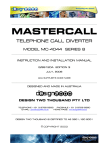Download Fixed Station Terminal – FST 5000 Series
Transcript
VERSION 1.1 – COMMERCIAL IN CONFIDENCE Fixed Station Terminal – FST 5000 Series ASTRO 25 Digital APCO Project 25 Compliant __________________________________________________________________________________ Installation & Service Handbook Item 3 of List of Deliverables Document Number G/05164G Version 1.1 – May 2012 __________________________________________________________________________________ Design Two Thousand Pty Ltd 9-11 Rose Street Upper Ferntree Gully Melbourne, Victoria, 3156 Australia Australian Business Number: 45 005 014 639 Telephone: +613 9758 5933 Facsimile: +613 9758 5560 Email: [email protected] Web Site: www.design2000.com.au © 2012 - Design 2000 Pty Ltd Est. 1968 FST 5000 Series Installation & Service Manual G/05164G Version 1.1 Page 1 May 2012 VERSION 1.1 – COMMERCIAL IN CONFIDENCE DOCUMENT CONTROL Document Number Document Name Security Circulation G/05164G FST-5000 Series Installation & Service Handbook Commercial In Confidence Motorola, Design 2000, Licensed Installers Prepared By Peter Zeug Reviewed By Ross Kells, James O’Ryan, Kevin Byrne Approved By Version Control Edition Date Draft 1 Draft 2 V 1.0 V1.1 22/06/2006 26/06/2006 27/06/2006 25/05/2012 FST 5000 Series Installation & Service Manual G/05164G Notes Initial version J.O.’s amendments included K.B.’s notes & corrections made New desktop mic Version 1.1 Page 2 May 2012 VERSION 1.1 – COMMERCIAL IN CONFIDENCE FIXED STATION TERMINAL FST-5020-2A, FST-5050 SECTION 1 1.1 1.1.1 1.1.2 2 2.1 2.2 2.3 3 3.1 3.2 3.3 4 5 5.1 5.2 5.3 5.4 5.5 5.6 5.6.1 5.6.2 5.7 5.8 5.9 5.10 6 6.1 6.2 6.3 6.4 6.4.1 6.4.2 6.4.3 7 7.1 7.1.1 7.1.2 7.1.3 7.1.4 7.1.5 7.1.6 7.1.7 7.2 7.3 7.4 7.5 7.6 7.7 CONTENTS Functional Description General Features Operating Conditions Microphone Cradles Housing Concept FST-5020 FST-5020-2A FST-5050 Electrical & EMC Protection Safety EMC Front Panel Electronics Power ON/OFF DC Supply Indicator Rear Panel Electronics 10dB Attenuated RF Output RF Output External 12Vdc Rx Line Output (balanced) External Speaker Outputs E&M Interface E Interface M Interface Foot Pedal PTT Desk Microphone Headset Remote Head / 936 MPI Power Accessories Controller Microphone Fixed Antenna 5W Dummy Load Notes Microphone Bias Audio PA Output Main Power Circuit Description Radio Interface Ground Channel Activity PTT Rx Filtered Audio Monitor Auxiliary Microphone Ignition Sense 12V Charger External Speaker Outputs External Microphone External PTT Headset E&M Interface FST 5000 Series Installation & Service Manual G/05164G Version 1.1 Page 3 PAGE 6 6 7 7 8 8 8 9 10 10 10 10 11 11 11 12 12 12 13 13 14 14 14 14 15 15 17 17 18 18 18 18 19 19 19 19 20 20 20 20 21 21 21 21 21 21 21 22 23 24 25 May 2012 VERSION 1.1 – COMMERCIAL IN CONFIDENCE 7.8 8 8.1 8.2 8.3 8.4 8.5 8.6 8.7 8.8 8.9 8.10 8.11 8.12 8.13 9 10 10.1 10.2 11 11.1 Appendix A Appendix B Appendix C Appendix D Appendix E Appendix F Remote Head / 936 MPI Power Circuit Description for Fault Finding Radio Interface Power Supply 12 Volt Charger Power Supply Test Radio & Internal Speaker Test External Speaker Outputs Power Amplifier Test Headset External Microphone External PTT E&M Interface E&M Test Rx Line Output Test Board Level Tests Battery Maintenance Battery Check Battery Replacement Installation Aesthetics Feature Sets Circuit – Hierarchy schematic Circuit – Audio, E&M schematic Circuit – Amplifier schematic Circuit – Sub-board schematic Circuit – Power Supply schematic 25 26 26 27 27 28 29 29 30 31 31 32 32 33 34 35 37 37 38 39 39 40 41 42 43 44 45 Est. 1968 FST 5000 Series Installation & Service Manual G/05164G Version 1.1 Page 4 May 2012 VERSION 1.1 – COMMERCIAL IN CONFIDENCE ______________________________________________________________________________________________ Assumptions This document assumes that qualified installers and maintenance technicians perform the installation and maintenance procedures and are therefore aware of basic wiring and installation ‘Industry Best Practices’. The Occupational Health & Safety of all personnel working on or near this equipment is the responsibility of the installer or technician performing the tests, or operations. Warning This equipment may contain lethal voltages, and must be isolated from supply before any cover is removed. Warranty The Fixed Station Terminal Units have a Two Year Warranty against defects in Materials and Workmanship. If problems are experienced with the installation or operation of the Fixed Station Terminal Unit please call the Help Desk Number listed below before returning units to the factory for repair. In many cases, problems can be diagnosed and rectified over the phone, avoiding unnecessary transportation and service costs. HELP DESK 03 9758 5933 (All Hours) ______________________________________________________________________________________________ FST 5000 Series Installation & Service Manual G/05164G Version 1.1 Page 5 May 2012 VERSION 1.1 – COMMERCIAL IN CONFIDENCE 1 FUNCTIONAL DESCRIPTION Figure 1: FST-5020-2A Front 1.1 Figure 2: FST5020-2A Rear GENERAL FEATURES The Fixed Station Terminal and variants are a re-locatable desktop-mounted XTL 5000 Mobile Radio for use in an office environment or temporary location. In a fixed installation, these Radio Terminals are used in 1 Watt low power mode. In certain field applications they can be configured for standard 25 Watt mobile power mode. See Appendix A for applicable options. The Fixed Station Terminal operates from either 230 Vac mains power, or an internal/external 12 Vdc battery. The FST-5020-2A Terminal has the capability to: Charge the inbuilt 12 Vdc rechargeable battery whilst powered from the mains Power four external 5W nom., 4-8 Ohm speakers Provide a 600 Ohm balanced Rx audio output Provide an E&M interface for an external microphone/speaker (Tx/Rx) arrangement Interface an external desk microphone Interface an external lightweight headset/microphone Interface an external foot pedal PTT. Power a remote radio head and speaker. These interfaces meet telecommunications network connection safety and level requirements (AS/NZS 60950, ACA TS 006 Clause 5.2.2 (a)). The Fixed Station Terminal Interface (audio break-outs) circuit board is buffered to allow operation of all facilities simultaneously. Preset controls are accessible via recessed, screwdriver adjustable, controls located on the rear panel. FST 5000 Series Installation & Service Manual G/05164G Version 1.1 Page 6 May 2012 VERSION 1.1 – COMMERCIAL IN CONFIDENCE 1.1.1 Operating Conditions The Fixed Station Terminal enclosure and its installed power supply operate under the following physical conditions: Power source: 85~240 Vac 50 Hz mains (230 Vac 50 Hz nominal). Nominal output current rating: Continuous 5.0 Amps @ 13.8 V 20 Minutes @ 20% duty cycle 10 Amps @ 13.8 V Temperature: Ambient temperature range 0°C to 40°C with a relative humidity of 0 to 90% noncondensing while mounted in the enclosure. 1.1.2 Microphone Cradles The FST-5020-2A & 5050 has microphone cradles on each side to accommodate left & right handed applications. FST 5000 Series Installation & Service Manual G/05164G Version 1.1 Page 7 May 2012 VERSION 1.1 – COMMERCIAL IN CONFIDENCE 2 HOUSING CONCEPT There are four variants (at this time) of the enclosure that houses the basic elements. The physical layout consists of a metal housing that holds the XTL 5000 Mobile radio, audio and control interface board, bi-directional coupler, antenna and power supply. 2.1 Fixed Station Terminal FST-5020 This housing is a freestanding case with a minimal footprint. The physical layout consists of a metal housing that holds the XTL 5000 Mobile radio, audio and control interface board, bi-directional coupler, antenna and power supply. The radio is a dash mount or remote mount (optional) Motorola XTL 5000 Mobile Terminal. The standard mobile trunnion bracket is used inside the enclosure and the radio is held in place with two trunnion screws. Enclosure dimensions including feet: 2.2 280mm x 235mm x 270mm (H x W x D) Fixed Station Terminal FST-5020-2A This model also includes a 7.2Ah internal lead acid battery mounted on the internal mounting tray, and a battery isolation switch on the front panel. The battery isolation switch should be turned to the downward ‘ON’ position whenever the FST is connected to mains power or when you require the FST to run on battery power. Whenever the FST is to be stored, turn the switch to the upward ‘OFF’ position. Enclosure dimensions including feet: 280mm x 235mm x 270mm (H x W x D) FST 5000 Series Installation & Service Manual G/05164G Version 1.1 Page 8 May 2012 VERSION 1.1 – COMMERCIAL IN CONFIDENCE 2.3 Fixed Station Terminal FST-5050 This model is a ‘no-frills’ version with similar RF & electrical characteristics as the FST-5020-2A but with no external audio inputs and outputs. The mains power cable is hard-wired. This model also includes a 10.5Ah internal lead acid battery mounted on the internal mounting bracket, and a battery isolation switch on the rear panel. The battery isolation switch should be turned to the ‘ON / CHARGE’ position whenever the FST is connected to mains power or when you require the FST to run on battery power. Whenever the FST is to be stored, turn the switch to the ‘OFF’ position. Enclosure dimensions including feet: Please Note: 280mm x 235mm x 270mm (H x W x D) The battery isolation switch should be turned to the ‘ON / CHARGE’ position whenever the FST is connected to mains power or when you require the FST to run on battery power. Whenever the FST is to be decommissioned & stored, turn the switch to the ‘OFF’ position. FST 5000 Series Installation & Service Manual G/05164G Version 1.1 Page 9 May 2012 VERSION 1.1 – COMMERCIAL IN CONFIDENCE 3 ELECTRICAL & EMC 3.1 Protection The Fixed Station Terminal has the following safety protection characteristics: In-Rush current: Power supply: The maximum in-rush current is 40 A at 230 Vac cold start. The Power supply is fully protected against overload and short circuit by an OVP circuit with shutdown. Recycle AC supply to reset after 30 seconds. The Fixed Station Terminal has a front panel Mains on/off switch, ‘AC on’ indicator and ‘DC Supply’ present indicator. Output regulation: ±3% over 0 to 10 A and full mains variation from a nominal 13.8 Vdc Output ripple and noise: 300mV Peak-to-Peak maximum at 0 to 100% load and over the full mains voltage range. Power cord: IEC, 230Vac, 10A. It is two metres in length. Shown here is the FST-5020-2A IEC power cord & input 3.2 Safety The Power Supply is designed and tested to AS/NZS 61558.2.6-2001 and AS/NZS 61558.1-2000, UL1950, EN60950, EN50178 as applicable 3.3 EMC compatibility The Motorola XTL 5000 Mobile Terminal meets the requirements of AS/ANZ 3548-1995 and EN55022 Level B. FST 5000 Series Installation & Service Manual G/05164G Version 1.1 Page 10 May 2012 VERSION 1.1 – COMMERCIAL IN CONFIDENCE 4 FRONT PANEL ELECTRONICS There are a number of front panel indicators and control features on the Fixed Station Terminal: Main Power ON/OFF Switch: Located on the bottom right corner. When the main power switch is switched to the ON position the switch will illuminate and the XTL 5000 radio will power up. Model FST-5020-2A. Model FST-5050 has no Mains on/off switch. Only the radio power button is used. DC Supply LED: Located on the top right hand corner. When the dc power switch is placed in the ON position (down) and the internal battery is charging, the LED will illuminate (red). The FST-5020-2A has a battery on/off switch with an integrated red LED. The FST-5050 has the same switch on the rear panel. FST 5000 Series Installation & Service Manual G/05164G Version 1.1 Page 11 May 2012 VERSION 1.1 – COMMERCIAL IN CONFIDENCE 5 REAR PANEL INTERFACE ELECTRONICS There are a number of additional audio and control features located on the rear panel of the Fixed Station Terminal: 5.1 10 dB Attenuated RF Output Located on the rear panel is a 10 dB attenuated RF output for the fixed antenna or a suitable external antenna (unity gain, 450 – 520 MHz). This is to be used during normal trunking operation. The following indicates the nominal output of the terminal in low and high power modes (with the dummy load connected to the non-attenuated RF Output): Low power – 1 Watt High power – 2.5 Watt Caution: If the Fixed Station Terminal is set to high power and the fixed antenna is connected to the Attenuated RF Output, the Terminal will transmit at a nominal 2.5 Watts. ACMA regulations stipulate that all Fixed Stations in a normal office environment must not transmit more than 1 Watt of RF output power. Verify that the 5 Watt dummy load is connected to the RF Output when operating the Fixed Terminal with the fixed antenna. 5.2 Non-Attenuated RF Output Located on the rear panel is a non-attenuated RF output for an external antenna located on a mast. An external antenna is to be used only if the integrated fixed antenna does not provide adequate reception. The following indicates the nominal output of the terminal in low and high power modes (with the dummy load connected to the Attenuated RF Output): Low power – 10 Watt High power – 25 Watt Warning: Do not connect the fixed antenna to this output. Operating the Fixed Station Terminal with the fixed antenna connected to the non-attenuated RF Output can result in a radiation hazard to the operator and bystanders. Only use a proper external antenna located on a mast. Verify that the supplied 5 Watt dummy load is connected to the Attenuated RF Output when operating the Fixed Terminal with an external antenna. FST 5000 Series Installation & Service Manual G/05164G Version 1.1 Page 12 May 2012 VERSION 1.1 – COMMERCIAL IN CONFIDENCE 5.3 External Battery This interface accepts an input of 12 Vdc (up to 18 Vdc with reverse polarity fuse protection) or charges an external 12V 10 Ah sealed lead-acid battery for standby power. This standby battery may operate the radio and auxiliary equipment in the case of mains power failure. The battery connection charges the battery at a minimum of the 10 Amp-hour rate when the AC supply is available, while continuing to run the radio. It is possible to connect a 12 Vdc standby power source other than a battery to provide standby power. 5.4 500/600Ω Receive Line Output with preset level This audio output is designed to connect to high impedance balanced input PA amplifier systems. The line output has a standard ¼” stereo phono jack connector located on the rear panel. The level is adjusted by a recessed, screwdriver adjustable, volume control located next to the jack. FST 5000 Series Installation & Service Manual G/05164G Version 1.1 Page 13 May 2012 VERSION 1.1 – COMMERCIAL IN CONFIDENCE 5.5 External 4-8Ω Speaker Outputs with preset level These outputs are designed to drive four independent 5W nom. 4-8Ω speakers. The minimum audio output level for each output is internally fixed. The maximum audio output level for each speaker is adjusted by a recessed, screwdriver adjustable, volume control above each of the speaker outputs. The outputs are on a pluggable eight-way connector block with screw terminals. 5.6 4-wire E&M Interface This is a radio-independent 4-Wire 600Ω balanced Tx pair and Rx pair plus 12-48V E&M connections. Both the E & M interfaces are optically isolated providing galvanic isolation. These interfaces meet telecommunications network connection safety and level requirements (AS/NZS 60950, ACA TS 006 Clause 5.2.2 (a)) and are available on an RJ45 connector located on the rear panel. 5.6.1 Receiver E (Ear/Equipment) interface The Receive signal condition is indicated by a ‘contact closure’ on the ‘E’ lead of the Fixed Station Terminal. -12 to 48V is supplied by the external equipment. The Receive audio level is adjustable from -20dBm to -5dBm for 60% system deviation using the recessed, screwdriver adjustable, volume control to the right of the jack. 5.6.2 Transmitter M (Mouth/Modulator) interface The transmitter is keyed by -12 to -48V applied from the external equipment to the ‘M’ lead of the Fixed Station Terminal. The Transmit audio level is adjustable from -20 dBm to -5 dBm for 60% system deviation using the recessed, screwdriver adjustable, volume control to the left of the jack. FST 5000 Series Installation & Service Manual G/05164G Version 1.1 Page 14 May 2012 VERSION 1.1 – COMMERCIAL IN CONFIDENCE 5.7 Foot Pedal PTT The external Push to Talk input uses a 3 pin 0.156 inch header interface. Pulling this line to ground will enable the PTT function, activating the AUX_MIC input. 5.8 Desk Microphone Located on the rear panel, this RJ-45 provides an interface for PTT and microphone audio. The microphone signal is independent of the microphone signal on the front microphone connector. The nominal input level is 80mV RMS for 60% deviation, but can also support 300 mV RMS. The DC impedance is 600 Ohms and the AC impedance is 560 Ohms. The transmit level can be adjusted using the recessed, screwdriver adjustable, volume control next to the Mic jack. FST 5000 Series Installation & Service Manual G/05164G Version 1.1 Page 15 May 2012 VERSION 1.1 – COMMERCIAL IN CONFIDENCE A new desktop microphone was released circa 2011. It is model number RMN5068. The RJ-45 connector is pin for pin compatible however the internal dips switches require adjustment. The dipswitches are accessed by removing the base plate. RMN5068 Desktop Microphone Recommended RMN5068 Dip Switch settings for operation with FST-5020-2A SW1 SW2 SW3 SW4 SW5 SW6 SW7 SW8 FST 5000 Series Installation & Service Manual G/05164G Lever DOWN Lever DOWN Lever UP Lever DOWN Lever DOWN Lever DOWN Lever DOWN Lever UP Version 1.1 Page 16 May 2012 VERSION 1.1 – COMMERCIAL IN CONFIDENCE 5.9 Light Weight Headset and Microphone Located on the rear panel, this RJ-22 interface (4P4C) provides a Tx mic pair and an Rx ear piece pair. The headset and microphone level adjustments are recessed, screwdriver adjustable, volume controls on either side of the jack. These interfaces meet telecommunications network connection safety and level requirements (AS/NZS 60950, ACA TS 006 Clause 5.2.2 (a)). 5.10 XTL 5000 Remote Control Head Power A 12 Vdc external power connection can be used to power the XTL 5000 Remote Control Head and external speaker connected to it. For this application it is used to power the Omnitronics 936 Multi-purpose Interface for remote handsets. FST 5000 Series Installation & Service Manual G/05164G Version 1.1 Page 17 May 2012 VERSION 1.1 – COMMERCIAL IN CONFIDENCE 6 ACCESSORIES There are a number of accessories included with the Fixed Station Terminal (model dependant): 6.1 Controller Microphone The Controller keypad with PTT and programmable buttons connects to the DB25 interface located on the front of the XTL5000 mobile radio. 6.2 Fixed Antenna A 450 – 520 MHz ground independent dipole antenna with unity gain (Polar model 315U) is fixed to the rear of the cabinet and connects to the 10 dB Attenuated RF connector. 6.3 5 Watt Dummy Load A 5 Watt dummy load, to absorb excess transmit power while in Low Power mode, normally connects to the RF connector. It is alternatively connected to the Attenuated RF connector when operating the Fixed Terminal in the high power state with an external antenna connected to the RF connector. FST 5000 Series Installation & Service Manual G/05164G Version 1.1 Page 18 May 2012 VERSION 1.1 – COMMERCIAL IN CONFIDENCE 6.4 Notes The following technical notes assist accessory selection: 6.4.1 Microphone Bias (Transmitter) Most microphones are powered by a ‘phantom’ Power supply, where the bias to the electronics within the microphone is supplied as direct-coupled down the MIC_IN line. During Push-To-Talk or transmit (PTT), the microphone electronics are connected to this line and loads it down from 9 V to a bias voltage between 3 to 6 volts. The AC load (or load line) is less than 560 Ohms at the radio due to AC decoupling on both sides of this resistor. AC Audio from the microphone passes up the same MIC_IN line and AC coupled eventually to a high impedance amplifier circuit. It is imperative that this input has a bias voltage between 1.5 and 9.5 volts. Connecting to anything other than a microphone could short out or clamp the input signal resulting in distortion. Warning: 6.4.2 The output of other types of electronics is typically referenced to zero volts DC and would require a 10 µF capacitor to be placed in series with MIC_IN. If the capacitor is polarized, the positive lead goes to the radio MIC_IN. Some audio generators have the option of applying the 1.5 Volts DC offset, which may be used in place of a capacitor. Audio PA Output Bias (Receiver) The audio PA is a Bridge-To-Load (BTL) amplifier. When the radio is in receive mode, the output of both speaker leads are biased up to half of the supply voltage. Both leads are at the same potential so the average DC voltage across the load is zero. At maximum volume, the signal voltage to the load is double that of one amplifier peak-to-peak because the amplifiers work together 180 degrees out of phase. Caution: 6.4.3 Do not short either lead to ground, which might cause component damage. Even though audio may still be heard from the speaker, the shorted side will go into current limiting and eventually into thermal shutdown, shutting off the amplifier. These protection devices are not intended to be tested. Main power The radio itself requires a nominal 13.75Vdc supply with negative ground. This is provided by an internal power supply with 85~240 Vac 50 Hz mains (230 Vac 50 Hz nominal) input and 14.2Vdc output. This output travels via Schottky steering protection diodes to produce about 13.75V at the radio power input. This supply to the radio transceiver meets low output hum and noise requirements, as well as low RF radiation levels to prevent interference with the radio receiver. The power supply may operate with a 12 Vdc sealed lead-acid standby battery. FST 5000 Series Installation & Service Manual G/05164G Version 1.1 Page 19 May 2012 VERSION 1.1 – COMMERCIAL IN CONFIDENCE 7 CIRCUIT DESCRIPTIONS These are mid-level descriptions of the interfaces. 7.1 Radio Interface (FST-5020-2A) Viewed from wiring side The feature connector (J2) on the XTL5000 provides a number of signals required by the FST for interfacing to various functions. These are listed in the table below: Signal Description Ground Channel Activity PTT Rx Filtered Audio Monitor Aux. Microphone Ignition Sense 7.1.1 J2 Pin Number Feature connector 26 pin 4 row DB style 1 13 16 21 22 23 25 PC-5021 Pin Number DB9 (PL13) PC-5041 Pin Number DB9 (PL18) 1 2 3 6 5 7 9 PC-5041 Pin Number RJ-45 (PL13) 2 1 8 7 4 5 3 Ground The Ground terminal is a common ground and return for all signals, to and from the FST. 7.1.2 Channel Activity The Channel Activity output from the radio indicates Carrier Operated Squelch (COS) to the FST E&M and squelch circuits. Please note that the Channel Activity signal is dependent on the radio’s code plug. The Channel Activity output is required for proper operation of the Omnitronics 936 MP Interface and the FST’s squelch facility. FST 5000 Series Installation & Service Manual G/05164G Version 1.1 Page 20 May 2012 VERSION 1.1 – COMMERCIAL IN CONFIDENCE 7.1.3 PTT The PTT input to the radio accepts PTT signals from the FST E&M circuit, Foot pedal PTT and Desk microphone PTT switch. 7.1.4 Rx Filtered Audio This is the audio received by the radio and subsequently used to drive the following circuits: Speaker amplifiers, E&M audio from Radio, Balanced Audio out, and Headset output for earphones. 7.1.5 Monitor Not used on the FST at this time. 7.1.6 Aux Microphone The Aux Microphone input to the radio receives audio from the Desk Mic and the FST E&M Tx Audio for transmission to air. 7.1.7 Ignition Sense The FST supplies 12V to the Ignition Sense pin of dash mount and remote mount radios for automatic turn on. Please Note: The Radios currently in use will only operate correctly if this signal is at 12V. On PC-5041 (FST-50202A) boards, link LK5 will break this supply should it be needed in the future. 7.2 12 Volt / Charger (FST-5020-2A) 12Vdc (nominal) 10A is fed into the FST boards on PL9 through to D1, a steering diode, then to the output to the lead acid battery for charging. From D1 the power is tracked through D2, to feed the circuits on the FST board, and power the radio. 7.3 External Speaker Outputs (FST-5020-2A) The signal originating at J2 pin 21 (Rx Filtered Audio) is amplified via 4 independent circuits designed to drive 4-8 Ohm loads rated at a nominal 5W with a set level audio output. Each has an independent potentiometer to adjust the output. All 4 outputs are presented at the rear panel on a combined 8 way terminal block. The minimum audio output level for each output is internally preset. The maximum audio output level is adjusted by a recessed, screwdriver adjustable, volume control above each of the four outputs. These outputs are separate connectors interchangeable with two pin pluggable screw connectors. Caution: Do not short either lead to ground, which might cause component damage. Even though audio may still be heard from the speaker, the shorted side will go into current limiting and eventually into thermal shutdown, shutting off the amplifier. These protection devices are not intended to be tested. FST 5000 Series Installation & Service Manual G/05164G Version 1.1 Page 21 May 2012 VERSION 1.1 – COMMERCIAL IN CONFIDENCE 7.4 External Microphone (FST-5020-2A) The microphone connector is an RJ-45 (SK3). This provides an interface for PTT and microphone audio with pin outs as per the table below: Pin Number 1&2 3 4 5 6 7&8 Description Not Connected PTT Microphone Ground Hook Not connected Level / Sensitivity Pull down to activate Bias voltage 12V 0V Via LK4 to MON (Not implemented These pin outs match Motorola Desk Microphone HMN3000B-4273 and RMN5068A RJ-45 interface. The microphone signal is independent of the microphone signal on the front microphone connector. The nominal input level is 80mV RMS for 60% deviation, but can also support 300 mV RMS. The DC impedance is 660 Ohms and the AC impedance is 560 Ohms. The level adjustment is a recessed, screwdriver adjustable, volume control located on the rear panel. Please note that the RMN5068A has an eight way dip switch in the base of the unit. Dipswitch 6 must be in the DOWN position. HMN3000B-4273 FST 5000 Series Installation & Service Manual G/05164G RMN5068A Version 1.1 Page 22 May 2012 VERSION 1.1 – COMMERCIAL IN CONFIDENCE 7.5 External PTT (FST-5020-2A) A 3 pin header (PL17) provides the connectivity for a foot operated PTT. Pins 1 & 3 are the PTT connection (pull low to activate) and the centre pin is 0V or Ground. This interface is for a Motorola 40C82663C06 foot pedal assy. It uses a 0.156” (3.96mm) pitch connector. 3.96mm (0.156”) CONNECTOR PIN 1 2 3 FST 5000 Series Installation & Service Manual G/05164G DESCRIPTION PTT GND PTT Version 1.1 Page 23 May 2012 VERSION 1.1 – COMMERCIAL IN CONFIDENCE 7.6 Headset (FST-5020-2A) A Headset can be connected to the RJ-22 interface socket (SK2). The pin-outs are as per the table below: Pin Number 1 2 3 4 Description Microphone + Speaker + Speaker Microphone - Level / Sensitivity 5.6V bias Speaker drive Speaker return Microphone return These pin outs match the North American Reverse polarity standard (please note that electret microphones are polarity sensitive. If there is no Tx audio, the RJ-22 plug on the headset lead will need to be reversed). The microphone bias provides drive to suit all tested headsets. It is buffered and then fed to the Auxiliary Microphone input on pin 23 of the J2 feature connector. The earpiece and microphone level can be adjusted by the recessed, screwdriver adjustable, volume controls located on the rear panel. An amplified headset may also be used. The Plantronics Vista M12 has been approved for use with the FST-5020 and FST-5020-2A Default settings on the Plantronics Vista M12 (Switch setting 5, adjustable pots set half way) and on the FST5020 (Headset Tx & Rx adjustable pots set half way) are an excellent starting point. It is possible to wind up all Rx pots with no reproducible risk of acoustic shock. It is suggested that all Tx pots are not adjusted higher than to the ¾ way mark. There are no serious ramifications other than distorted audio (not excessively loud but overdriven) at the distant radio. FST 5000 Series Installation & Service Manual G/05164G Version 1.1 Page 24 May 2012 VERSION 1.1 – COMMERCIAL IN CONFIDENCE 7.7 E&M Interface (FST-5020-2A) This is a radio-independent, 4-Wire 600Ω balanced, (Tx pair and Rx pair) plus 48 V passive E&M connection. This interface was set to match the Omnitronics 936 MPI interface. This interface meet telecommunications network connection safety and level requirements (AS/NZS 60950, ACA TS 006 Clause 5.2.2 (a)) and is available on an RJ45 (PL5) connector with pin outs as per the table below: Pin Number 1 2 3 4 5 6 7 8 Description Rx Carrier E +ve Rx return E –ve Tx Audio Rx audio Rx audio Tx Audio PTT (M +ve) PTT (M –ve) Level / Sensitivity Open collector=off, collector switched to return when carrier present (channel activity goes low) Rx (E) return Audio to Omnitronics 936 MPI from radio Audio from Omnitronics 936 MPI to radio Audio from Omnitronics 936 MPI to radio return Audio to Omnitronics 936 MPI from radio return Apply voltage (12-48V) between this pin and M return to PTT M return The Receive signal condition is indicated by a contact closure on the ‘E’ lead of the Fixed Station Terminal. -12 to 48V is supplied by the external equipment. The Receive audio level is adjustable from -20dBm to -5dBm for 60% system deviation using the recessed, screwdriver adjustable, volume control located on the rear panel. The transmitter is keyed by -12 to -48V applied from the external equipment to the ‘M’ lead of the Fixed Station Terminal. The Transmit audio level is adjustable from -20 dBm to -5 dBm for 60% system deviation using the recessed, screwdriver adjustable, volume control located on the rear panel. 7.8 XTL 5000 Remote Control Head /936 Power (FST-5020-2A) A 12Vdc external power connection to the XTL 5000 Remote Control Head, also used to power the Omnitronics 936 Multi-purpose Interface for remote handsets. FST 5000 Series Installation & Service Manual G/05164G Version 1.1 Page 25 May 2012 VERSION 1.1 – COMMERCIAL IN CONFIDENCE 8 DETAILED CIRCUIT DESCRIPTIONS FOR FAULT FINDING Assumptions This document assumes that qualified installers and maintenance technicians perform the installation and maintenance procedures and are therefore aware of basic wiring and installation ‘Industry Best Practices’. The Occupational Health & Safety of all personnel working on or near this equipment is the responsibility of the installer or technician performing the tests, or operations. Warning This equipment may contain lethal voltages, and must be isolated from supply before any cover is removed. 8.1 Radio Interface (FST-5020-2A) The feature connector (J2) on the XTL5000 provides a number of signals required by the FST for various interfacing functions. These are listed in the table below: Signal Description Ground Channel Activity PTT Rx Filtered Audio Monitor Aux. Microphone Ignition Sense J2 Pin Number Feature connector 26 pin 4 row DB style 1 13 16 21 22 23 25 PC-5021 Pin Number DB9 (PL13) PC-5041 Pin Number DB9 (PL18) 1 2 3 6 5 7 9 PC-5041 Pin Number RJ-45 (PL13) 2 1 8 7 4 5 3 These signals are described in the previous introduction, and further referred to in text below. FST 5000 Series Installation & Service Manual G/05164G Version 1.1 Page 26 May 2012 VERSION 1.1 – COMMERCIAL IN CONFIDENCE 8.2 Power Supply (Model dependant) FST-5020-2A The 5020 incorporates a 15V 150W switch mode supply with internal over voltage and over current protection. It is supplied from an IEC / Filter / Fuse combination via a two pole mains neon indicator rocker switch located on the front panel. The fuse in the IEC socket is a 6A 20 x 5 glass type fuse. An Earth connection is made on a stud beside the IEC socket, the body of the socket and the frame of the power supply. The radio body is connected to earth via its RF connectors. FST-5050 The 5050 incorporates a 15V 150W switch mode supply with internal over voltage, and over current protection. It is supplied from a hardwired mains lead. An Earth connection is made on a stud beside the cord grip grommet and at the frame of the power supply. The radio body is connected to earth via its RF connectors. 8.3 12 Volt / Charger (FST-5020-2A) 14.2Vdc (nominal) 10A is fed to the FST board from the power supply on PL9 (a 2 pin connector on PC-5021 or 3 pin connector on PC-5041). The three pin model tracks the current through T17 (filter) and the +ve via switch connections TP2 & TP3 and fed to D1. This is a heat sunk Schottky steering diode. From the cathode of D1 the +ve tracks via a 10A (20 x 5) fuse F6 to the output for charging the lead acid battery. The external battery is supplied via T11 (filter) to PL10 on the rear panel. Internal batteries are supplied via PL20. The power supply should be adjusted to provide 13.75 Volts at the Battery Connector. The Battery charge circuit is limited to a Maximum of 18V and is reverse polarity protected by a 5W zener diode Z7. From D1 the power is tracked through D2, to feed the circuits on the FST board, the auxiliary out put for the remote head, and power to the radio. The auxiliary output for remote head PL16 is protected by a 6A (20 x 5) fuse F7 and D5 protects it from reverse connections. A LED (normally blue) is provided to indicate DC present during operation (LED2), and either mounted on the PCB or in a bezel on the front panel. The FST-5020-2A has a battery isolation switch with an integrated red LED in place of the blue DC supply indicator found on the FST-5020. Sheet 4E of the circuit diagram shows the power connections and decoupling / supply caps to the various components on the main PCB. U4C is a buffered divider that provides 0VA and 0VB for the op amps on both boards. FST-5050 The FST-5050 charges the internal battery directly from the internal power supply when mains power is connected & the battery isolation switch is in the ‘ON / CHARGE’ position. FST 5000 Series Installation & Service Manual G/05164G Version 1.1 Page 27 May 2012 VERSION 1.1 – COMMERCIAL IN CONFIDENCE 8.4 Power Supply Test Equipment required: True RMS Multimeter. Test Prerequisites / setup: Fully assembled FST plugged into a switchable 230Vac Mains socket outlet via portable in-line RCD. FST Mains switch OFF. Procedure: # Action 1 Turn on socket outlet switch and reset RCD 2 Turn on FST Mains switch 3 4 5 6 Connect Multi-Meter to EXT. BATT terminal and measure for dc volts Adjust battery charging potentiometer so that Multi-Meter reads 13.75Vdc Disconnect Multi-Meter Turn off FST Mains switch Expected result Check if incorrect ac Neon to illuminate No Neon, check fuse in IEC socket dc Power LED to illuminate 10 – 15Vdc No DC LED, Check for voltage to PL9 If no Voltage cycle power 13.75Vdc ac Neon to go out and dc Power LED to go out FST 5000 Series Installation & Service Manual G/05164G Version 1.1 Page 28 May 2012 VERSION 1.1 – COMMERCIAL IN CONFIDENCE 8.5 Radio & Internal Speaker Test Equipment required: True RMS multimeter, Portable Radio - Model XTS5000, 820Hz Oscillator. Test Prerequisites / setup: Fully assembled FST plugged into a switchable 230Vac Mains socket outlet via a portable in-line RCD. Power applied to FST, radio turned on and talk group selected. Portable radio turned on and talk group selected. Procedure # 1 2 3 4 5 8.6 Action Key Portable Acoustically couple 820Hz Oscillator to Portable Adjust FST XTL5000 Radio volume control slowly from min to max Adjust volume back to ½ way Turn off FST and portable Expected result FST to go into RX carrier receive mode FST speaker to sound Check if incorrect Check speaker connector No distortion up to 90% All indicators to go out. External Speaker Outputs (FST-5020-2A) Signal from J2 pin 21 (Rx Filtered Audio) tracks from pin 6 on the DB9 (or pin 7 RJ-45) PL13 to PL15 PL14 header / socket combination to the sub board on pin 25. On the sub board it passes through C68 & R85 to U15D. This op amp buffers the signal and passes the signal to the Level pots RV4, 5, 6, & 7 via capacitors. The op amp gain can be reduced to zero if there is current flowing through the LED in the LCA110 K2 as would be indicted by LED1 illuminating. This function is to squelch the signal and is active when J2 pin 13 (Channel Activity) is low or not active. K2 is in series with K1 across U3B on the main PCB. From the pots the signals pass through caps to A1,2,3&4 back to the main PCB on pins 3,5,7 & 9 PL15 PL14 header / socket combination to the amplifier section as shown on sheet 4C. The signal to each amplifier is buffered then passed through a tantalum capacitor to pin 1 of the amplifier (TDA2003) mounted on the heat sink dissecting the main PCB. It should be noted that the amplifier can be configured in a bridge arrangement but this is not fitted to conserve power (these components are designated “BRIDGE” on the circuit diagram). The amplified signal from pin 4 on the TDA2003 passes through a 1000uF 16V electrolytic capacitor via a choke to the output terminals. FST 5000 Series Installation & Service Manual G/05164G Version 1.1 Page 29 May 2012 VERSION 1.1 – COMMERCIAL IN CONFIDENCE 8.7 Power Amplifiers Test (FST-5020-2A) Equipment required: True RMS multimeter, Oscilloscope (CRO) - Tektronix TDS 220, 820 Hz Oscillator, Portable Radio, 8 Ohm load. Test Prerequisites / setup: Fully assembled FST plugged into a switchable 230Vac Mains socket outlet via a portable in-line RCD. Power applied to FST, radio turned on and talk group selected. Portable radio turned on and talk group selected. # 1 2 3 Action Connect 8 Ohm load and CRO to Speaker 1 output Key Portable Acoustically couple 820Hz oscillator to Portable Expected result Check if incorrect FST to go into RX carrier receive mode FST speaker to sound Check signal to Main PCB CRO displays signal 4 5 6 7 8 Adjust Speaker 1 volume control slowly from min to max Repeat 1 – 4 for Speaker terminals 2, 3, and 4 Turn all four speaker potentiometers anticlockwise to ½ way mark Disconnect 8 Ohm load and CRO Turn off FST and portable Check volume control Trace signal through path described above. No clipping from min to 90% No clipping from min to 90% All indicators to go out. FST 5000 Series Installation & Service Manual G/05164G Version 1.1 Page 30 May 2012 VERSION 1.1 – COMMERCIAL IN CONFIDENCE 8.8 Headset (FST-5020-2A) Connections for the headset are provided by an RJ-22 interface socket (SK2). Connections are as per the table below: Pin Number 1 2 3 4 Description Microphone + Speaker + Speaker Microphone - Level / Sensitivity 5.6V bias Speaker drive Speaker return Microphone return The pin outs match the North American Reverse Polarity standard, see sheet 4D sub board for circuit detail. The microphone bias is provided by R103, clamped at 5.6 volts by zener Z8, and stabilised by C98. This voltage is applied via R104 to MIC+ pin 1 SK2. The signal from the mic decoupled by C99 and the level set by pot RV9 (Tx [to radio]). The signal is buffered / filtered by the op amp U15D before being mixed by the buffer microphone op amp U4D on the main board (common to E&M, and External Mic) and input to Auxiliary Microphone input at pin 23 on J2 (feature connector) on the main board. The headset and microphone level adjustment are recessed, screwdriver adjustable, volume controls located on the rear panel. The speaker audio (From Radio) is derived from J2 pin 21 Rx Filtered Audio via the buffer U3B (squelched) and the out put from this is common to the Balanced Audio & E&M. The signal is tracked through C106 to pot RV10 (Rx [from radio]) then C105 / R109 to the buffer / driver U15C. The audio is then tracked via decoupling cap C103 to limit resistor R113. The output is clamped by back to back zener diodes Z9 & Z10 to limit the amplitude of the signal. The return is via R114 to ground. 8.9 External Microphone (FST-5020-2A) The microphone connector is an RJ-45 (SK3) that provides an interface for PTT and microphone audio with pin outs as per the table below: Pin Number 1&2 3 4 5 6 7&8 Description Not Connected PTT Microphone Ground Hook Not connected Level / Sensitivity Pull down to activate Bias voltage 12V 0V Via LK4 to MON (Not implemented) These pin outs match Motorola Desk Microphone HMN3000B-4273 RJ-45 interface. The microphone signal is independent of the microphone signal on the front microphone connector. The nominal input level is 80mV RMS for 60% deviation, but can also support 300 mV RMS. The DC impedance is 660 Ohms and the AC impedance is 560 Ohms. The level adjustment is a recessed screwdriver adjustable volume control located on the rear panel. The microphone bias is provided by R97, the signal from the mic decoupled by C94 and the level set by pot RV8. There is a clamp and filter network provided by D3 & 4 plus capacitors and resistors (see sheet 4D sub board for detail) before being buffered by the microphone op amp U4D on the main board (common to E&M, and Head set) and input to Auxiliary Microphone input at pin 23 on J2 (feature connector). Pin 6 on the RJ-45 SK3 is tracked to LK4 (not fitted) and then to J2 pin 22 Monitor. This circuit has not been implemented. The PTT circuitry is common with the External PTT described below. FST 5000 Series Installation & Service Manual G/05164G Version 1.1 Page 31 May 2012 VERSION 1.1 – COMMERCIAL IN CONFIDENCE 8.10 External PTT (FST-5020-2A) A 3 pin header (PL17) provides the connectivity for a foot operated PTT. Pins 1 & 3 are the PTT connection (pull low to activate) and the centre pin is 0V or Ground. This interface is for a Motorola 40C82663C06 foot pedal assy. It uses a 0.156” (3.96mm) pitch connector. The Ext PTT is applied to a bias / divider network of R93. 94, & 95 and applied to the base of Q2. Q2 conducts in the idle state holding Q3 off. When PTT is switched to ground Q2 is turned off, turning Q3 on and J2 pin 16 PTT is switched to ground causing the radio to transmit. See circuit diagram sheet 4D (Sub board) for details 8.11 E&M Interface (FST-5020-2A) This is a radio-independent, 4-Wire 600Ω balanced, (Tx pair and Rx pair) plus 48 V passive E&M connection. This interface meets telecommunications network connection safety and level requirements AS/NZS 60950, ACA TS 006 Clause 5.2.2 (a)) and is available on an RJ-45 (PL5) connector with pin outs as per the table below: Pin Number 1 3 4 5 6 7 Description Rx Carrier E +ve Rx return E –ve Tx Audio Rx audio Rx audio Tx Audio PTT (M +ve) 8 PTT (M –ve) 2 Level / Sensitivity Open collector=off, collector switched to return when carrier present (channel activity goes low) Rx (E) return Audio to Omnitronics 936 MPI from radio Audio from Omnitronics 936 MPI to radio Audio from Omnitronics 936 MPI to radio (return) Audio to Omnitronics 936 MPI from radio (return) Apply voltage (12-48v) between this pin and M return to PTT M return E&M signalling provides the means to remotely signal and control the FST. The RJ-45 connector PL5 located on the rear panel has the associated circuitry (see circuit diagram sheet 4B) to achieve this control. The received (E) signalling, Pins 1 & 2 are connected to an open collector of U2 PS-2532-1 opto via a diode bridge, protection fuse and limiting resistor as shown on sheet 4B. This arrangement provides a polarity independent open collector that switches when J2 pin 13 Channel Activity (COS) goes high. In the table above polarities are indicated to reduce confusion. This signal indicates that there is audio being received by the radio, which is delivered to pins 3 & 6 of the RJ-45 PL5. Voltages between 12 and 48 Volts can be safely switched. LK3 is provided to shunt the limiting resistor out should there be insufficient current flowing for signalling, fit this link with great care. The received audio (From Radio) is derived from J2 pin 21 (Rx Filtered Audio) via the buffer U3B (squelched) and the out put from this is common to the Balanced Audio & Headset speakers. The signal passes through C5 and pot RV2 (Rx [from radio]) to drivers U4 A&B which are arranged in a push pull configuration to drive the primary on the 600 Ohm isolation Transformer T4. The secondary of T4 is connected to pins 3&6 via limiting resistors, fuse F4 and choke T2. There are also back to back zener diodes to limit the amplitude of the signal. The transmit (M) signalling on pins 7 & 8 of PL5 are connected to the bi-directional LED of U1 PS2505-1 via a limiting resistor and fuse. A capacitor is connected in parallel with the LED to provide some persistence & resistance to noise. The open collector of U1 is connected between J2 pin 16 PTT and Ground. In the table above polarities are indicated to reduce confusion. When this signal is applied audio to be transmitted by the radio, which is delivered to pins 4 & 5 of the RJ-45 PL5 will be transmitted by the radio. Voltages between 12 and 48 Volts can be safely used for FST 5000 Series Installation & Service Manual G/05164G Version 1.1 Page 32 May 2012 VERSION 1.1 – COMMERCIAL IN CONFIDENCE signalling. LK2 is provided to shunt the limiting resistor out should there be insufficient current flowing for signalling, fit this link with great care. The Transmit Audio (To Radio) applied to pins 4 & 5 of the RJ-45 PL5. It passes though a choke T1, limit resistor R4 and Fuse F2 to the primary of the 600 Ohm isolation transformer T3. There are also back to back zener diodes to limit the amplitude of the signal. The secondary of the transformer has an impedance matching resistor R5 in parallel and then the signal passes to the pot RV1 (Tx [to radio]). From the wiper of the pot the audio then tracks to a buffer amplifier U4D (which is common to the external microphone and headset mic) and this drives a bi-polar decoupling / isolating capacitor C3 to J2 pin 23 Auxiliary Mic. 8.12 E&M Test (FST-5020-2A) Test Equipment: Oscilloscope (CRO) - Tektronix TDS 220, 820 Hz Oscillator, Portable Radio, ODX driver – Model LI-4302. Test Prerequisites/Setup: Power applied to FST, radio turned on and talk group selected. Portable radio turned on and talk group selected. Procedure: # 1 2 3 4 5 6 7 8 9 10 11 Action Connect ODX driver output to E pair on RJ-45. Connect CRO to Tx pair on RJ-45 Connect 820Hz Oscillator to Rx pair on RJ-45 Adjust Tx potentiometer (audio to radio) for 1 V p-p. Connect ODX Driver to M pair on RJ-45 Connect CRO to Rx pair on RJ-45 Acoustically couple 820Hz Oscillator to Portable and key up Observe ODX driver looped condition Adjust Rx potentiometer (audio from radio) for 1 V p-p. Disconnect CRO Turn off FST and portable Expected result FST to Tx and Portable to Rx. Check if incorrect Sine wave on CRO 1V p-p (observe no clipping). FST to Rx Looped 1V p-p (observe no clipping). All indicators to go out. FST 5000 Series Installation & Service Manual G/05164G Version 1.1 Page 33 May 2012 VERSION 1.1 – COMMERCIAL IN CONFIDENCE 8.13 Balanced Audio Out Test (FST-5020-2A) The received audio (From Radio) is derived from J2 pin 21 (Rx Filtered Audio) via the buffer U3B (squelched) and the output from this is common to the E&M & Headset speakers. The signal passes through C8 and pot RV3 (Rx [from radio]) to drivers U3 C&D which are arranged in a push pull configuration to drive the primary on the 600 Ohm isolation Transformer T6. The secondary of T6 is connected to a 6.35mm “stereo” socket SK1 across the tip and ring. This is via limiting resistors R17 & 18, fuse F5 and choke T5. There are also back to back zener diodes Z5 & Z6 to limit the amplitude of the signal. A link LK1 is provided in case an earth is required for the shield (sleeve) of SK1. SHIELD Test Equipment: Oscilloscope (CRO) - Tektronix TDS 220, 820 Hz Oscillator, Portable Radio Test Prerequisites/Setup: Power applied to FST, radio turned on and talk group selected. Portable radio turned on and talk group selected. # 1 6 6 7 8 Action Connect CRO to ‘BAL. AUDIO OUT’ ¼” phono socket Acoustically couple 820Hz Oscillator to Portable and key up Adjust Rx potentiometer (audio from radio) for 1 V p-p. Disconnect CRO Turn off FST and portable Expected result Check if incorrect FST to Rx 1V p-p (observe no clipping). All indicators to go out. FST 5000 Series Installation & Service Manual G/05164G Version 1.1 Page 34 May 2012 VERSION 1.1 – COMMERCIAL IN CONFIDENCE 9 BOARD LEVEL TESTS (FST-5020-2A) Equipment required: True RMS multimeter, Oscilloscope (CRO) - Tektronix TDS 220, Sine wave Oscillator set to 1kHz 430mV PP, 13.5 Vdc power supply, 8 Ohm load, Assorted leads / adapters, eg DB9 male or RJ-45 with flying leads, 6.35mm Stereo plug with flying leads, Desk Mic, Foot Pedal PTT, Headset, Switch with fly leads, test LED set to illuminate at 12V with leads, 4k7, 560R, 47k axial 0W25 resistors, 4 x 3.9R 5W resistors. Test Prerequisites / setup: All pots (10) set to Minimum, Connect Headset, Desk Mic and PTT pedal, Connect Scope earth to convenient ground (-ve power supply), Power applied to FST at PL9. # Action Expected result Check if incorrect 1 Observe LED 2 Illuminates Illuminated Trace Voltage from PL9 through D1 &2 to VS Voltage at Pin 1 PL12 (5020) Check voltages at PL10 External Batt Connector or PL20 Internal Batt Connector Check Voltage at PL11 or 19 Voltage present 330 – 350mV lower than supply Trace Voltage from PL9 through D1 &2 to VS Check D1 330 – 350mV lower than Batt Connectors Check D2 Illuminated when switch off Test LED illuminates when switch is on. Check squelch circuit (K1, K2 & LED1) Check E circuit of E&M. Test LED Illuminates Test LED Illuminates Check PTT circuit Check PTT circuit Verify input signal using Channel 1 of O’scope at 435mV 1kHz Adjust oscillator Verify 45mV +/- 5mV output. See below Verify 575mV +/- 25mV output. If Ok See test 15 No output check the following points: See 14A & B Refer to Circuit diagram Sht 4B 2 3 4 5 6 7 8 9 10 11 12 13 14 14 A 14 B 14 C 15 Connect switch between 12V and DB9 pin 2 (or RJ-45 PL13 pin 1) Channel activity input. Observe LED1 (green) on sub board Connect test LED between 12V and pin 1 of RJ-45 PL5, Pin 2 connect ot ground. Disconnect Switch from Channel activity input & test LED from PL5. Connect test LED between 12V and DB9 pin 3 (or RJ-45 PL13 pin 8) PTT input Press PTT switch on Desk Mic Operate Foot Pedal PTT Disconnect Test LED Connect oscillator with a 4k9 resistor in series to RJ-45 PL5 pin 5 and connect RJ-45 PL5 pin 4 to ground Connect channel 2 to DB9 pin 7 (or RJ-45 PL13 pin 5) Aux Mic input with a 560 Ohm resistor from pin 7 to ground. Set E&M Tx RV1 to Max Check the voltages at end of R5 nearest Amplifiers (using scope set to DC) located near T3. Check the voltages at end of R5 furthest from Amplifiers (using scope set to DC) located near T3. Check the voltages at U4(d) pin 14 Microphone Buffer (using scope set to DC) located near T3. should read ~6.65V Flat (0VA). approx 200mV p-p on top of ~6.65V DC level. If not check Fuse F2 and T3. If ok perform next test 14C approx 1V p-p on top of ~6.65V DC level. If not check pot RV1, R6 and for any short to PL14 / 15 header to sub board pin 21, and circuits to MIC BUF see circuit diagram sht 4D If ok check C3 10uF 50V Bi-polar cap. Remove Oscillator, Check Channels1 & 2 are connected as per12 & 13 above 16 Set headset Tx RV9 to Maximum. Observe approx 200mV on channel Check Headset Tx Circuit on sheet 4D of diagram Speak into head set mic 2 17 Set Ext. Mic Tx to Maximum Observe approx 200mV on channel Check Desk Mic Tx Circuit on sheet 4D of diagram FST 5000 Series Installation & Service Manual G/05164G Version 1.1 Page 35 May 2012 VERSION 1.1 – COMMERCIAL IN CONFIDENCE 18 19 20 21 22 23 24 25 26 27 28 29 30 31 32 Press PTT on Desk mic and speak into Desk Mic Connect oscillator to DB9 pin 6 (or RJ-45 PL13 pin 7) Rx Filtered Audio. Connect Scope channel 1 with a 20k resistor in series to the oscillator point as above Connect Scope channel 2 to RJ-45 PL5 pin 6 with a 560R resistor in parallel to ground and connect RJ45 PL5 pin 3 to ground Set pot E&M Rx RV2 to Maximum Connect Channel 2 to the Tip of a 6.35mm stereo plug with a 47k resistor across Tip & Ring. Connect the Ring to ground. Set pot Balanced audio Out Rx RV3 to Maximum Listen to Headset Earpiece Set pot Headset Rx RV10 to halfway Set pot Headset Rx RV10 to max. Connect 4 x 3R9 5 Watt resistors to speaker socket across pins 1&2, 3&4, 5&6, 7&8 (+ to -) CAUTION: RESISTORS GET HOT Connect Scope Channel 2 to +ve end of resistor on speaker 1 While advancing Volume 1 RV4 Repeat for other resistors / amplifiers Check resistor / amplifier 1 again Test complete See below 2 Verify approx. 300mV Verify approx. 65mV +/- 5mV Observe Ch2 approx. 450mV +/50mV Observe 85mV +/- 15mV on channel 2 Check E&M Rx (from radio) Circuit on sheet 4B of diagram Observe 550mV +/- 25mV on channel 2 Observe no signal Observe comfortable signal level Check Balanced Audio Out Rx (from radio) Circuit on sheet 4B of diagram Observe loud signal level Check Headset Rx (from radio) Circuit on sheet 4D of diagram observe trace increasing until clipping occurs approx 3.7V then back off to approx 3.3V Check Amplifier1 Circuit on sheet 4C of diagram Observe still at 3.3V If not check for power supply sag. Switch off power supply, set all pots to centre (halfway), remove all connected equipment, reconnect internal power supply and all other connections. Test complete. FST 5000 Series Installation & Service Manual G/05164G Version 1.1 Page 36 May 2012 VERSION 1.1 – COMMERCIAL IN CONFIDENCE 10 BATTERY MAINTENANCE (FST-5020-2A & 5050) This FST-5020-2A includes a 12V, 7.2Ah internal lead acid battery mounted on the internal mounting bracket, and a battery isolation switch on the front panel. The battery isolation switch should be turned to the downward ‘ON’ position whenever the FST is connected to mains power or when you require the FST to run on battery power. Whenever the FST is to be stored, turn the switch to the upward ‘OFF’ position. The FST-5050 includes a 12V, 10.5Ah internal lead acid battery mounted on the internal mounting bracket, and a battery isolation switch on the rear panel. The battery isolation switch should be turned to the ‘ON / CHARGE’ position whenever the FST is connected to mains power or when you require the FST to run on battery power. Whenever the FST is to be stored, turn the switch to the ‘OFF’ position. 10.1 Battery Check Whenever mains power is connected and the battery switch is ON, the internal battery is automatically float-charged. The charge voltage on the FST-5020-2A can be checked with a multi-meter at the ‘EXT. BATT’ connector on the rear panel. It should read about 13.8Vdc. The battery supply voltage can also be checked at the same point by turning off the ‘MAINS’ power switch. It should be steady at ≥12Vdc with the radio turned on. The FST-5050 can be checked in the same way but at the internal battery terminals, which involves removing the FST cover to access the battery terminals. This should only be performed by an authorised service technician. Exercise extreme care not to go near the mains power underneath the internal shelf. FST 5000 Series Installation & Service Manual G/05164G Version 1.1 Page 37 May 2012 VERSION 1.1 – COMMERCIAL IN CONFIDENCE 10.2 Battery Replacement If the battery fails to operate the FST, isolate mains power, turn off the battery isolation switch, remove the FST cover, remove the battery clamp, battery leads and battery, and replace with the same type. Check for correct polarity (red = +ve, black = -ve) and reassemble the FST. Batteries should be systematically replaced at least every five years. The FST-5020-2A uses an Altronics Model S5090B battery. The FST-5050 uses a Power Sonic Model PSH-12100 F2 battery. Spares are available from Design 2000 Pty Ltd. FST 5000 Series Installation & Service Manual G/05164G Version 1.1 Page 38 May 2012 VERSION 1.1 – COMMERCIAL IN CONFIDENCE 11 INSTALLATION: GENERAL The relevant subsections & Installation check sheet for FST installation are covered in other Motorola documentation. Please consult your Fixed Station Terminal Manager as required. 11.1 Aesthetics Check that the equipment has no marks or damage that detracts from the equipment and appearance of the installation. More substantial marks and damage may affect equipment performance. An example of which may be a cracked case or damaged controller microphone inhibiting the function of the push buttons. FST 5000 Series Installation & Service Manual G/05164G Version 1.1 Page 39 May 2012 VERSION 1.1 – COMMERCIAL IN CONFIDENCE Appendix A - Feature Sets Please Note: Model FST-5040 is not currently used in Australia. FEATURE Single Enclosure Design (no external boxes) Mains Rocker Switch Mains Indicator DC Indicator Internal 14.2Vdc, 10A Supply Internal Battery Charger Internal 12V, 10Ah SLA Battery Internal 12V, 7Ah SLA Battery Battery On Indicator Battery Isolation Switch Internal Battery bracket (removable) Terminal for External Battery IEC Mains Filter & Fuse Attenuated & Non Attenuated N-Type RF Sockets Internal Bi-Directional Coupler Antenna Bracket 4 x Speaker Amplifiers, 5W nom., 4-8 Ohm E & M Interface Balanced Line Level Audio Output Inbuilt Speaker Foot Pedal PTT Input Headset Socket Remote Head Unit Power Terminal Desk Microphone Input Squelch circuitry Service Manual FST-5020 √ FST-5020-2A √ FST-5040 X FST-5050 √ √ √ √ √ √ X √ √ √ √ √ X √ X √ - X X X √ √ √ X X X X √ √ √ √ X X - √ √ √ √ √ √ √ √ √ √ √ X X √ √ √ √ √ √ √ √ √ √ √ X √ √ √ √ √ √ X X √ √ √ √ √ √ √ √ √ √ √ √ X X X √ √ √ √ √ √ √ √ √ X X √ FST 5000 Series Installation & Service Manual G/05164G Version 1.1 Page 40 May 2012 VERSION 1.1 – COMMERCIAL IN CONFIDENCE Appendix B - Circuit Diagram FST 5000 Series Installation & Service Manual G/05164G PC-5041 sheet 4A - Hierarchy Schematic Version 1.1 Page 41 May 2012 VERSION 1.1 – COMMERCIAL IN CONFIDENCE Circuit Diagram PC-5041 sheet 4B - Audio, E&M Schematic FST 5000 Series Installation & Service Manual G/05164G Version 1.1 Page 42 May 2012 VERSION 1.1 – COMMERCIAL IN CONFIDENCE Circuit Diagram PC-5041 sheet 4C – Amplifiers Schematic MOTOROLA I/O HUB – SCHEMATICSAMPS PC-5041 SHT 4C FST 5000 Series Installation & Service Manual G/05164G Version 1.1 Page 43 May 2012 VERSION 1.1 – COMMERCIAL IN CONFIDENCE Circuit Diagram PC-5041 sheet 4D – Sub-board Schematic FST 5000 Series Installation & Service Manual G/05164G Version 1.1 Page 44 May 2012 VERSION 1.1 – COMMERCIAL IN CONFIDENCE Circuit Diagram PC-5041 sheet 4E – Power Supply Schematic FST 5000 Series Installation & Service Manual G/05164G Version 1.1 Page 45 May 2012













































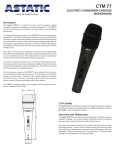
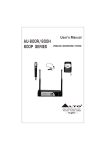
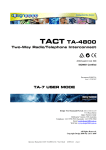
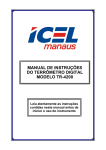
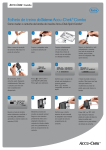

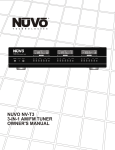
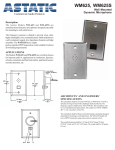

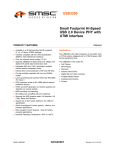
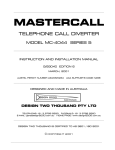
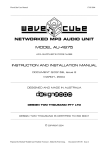

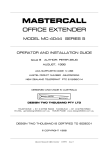

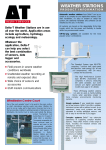
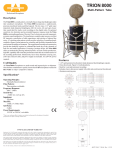
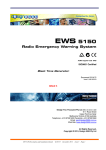
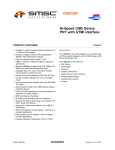

![Hire And Sales Catalogue V4.40 [april2013].](http://vs1.manualzilla.com/store/data/005975062_1-8950e43f7cbe305f577dc550ee5fbd1b-150x150.png)
